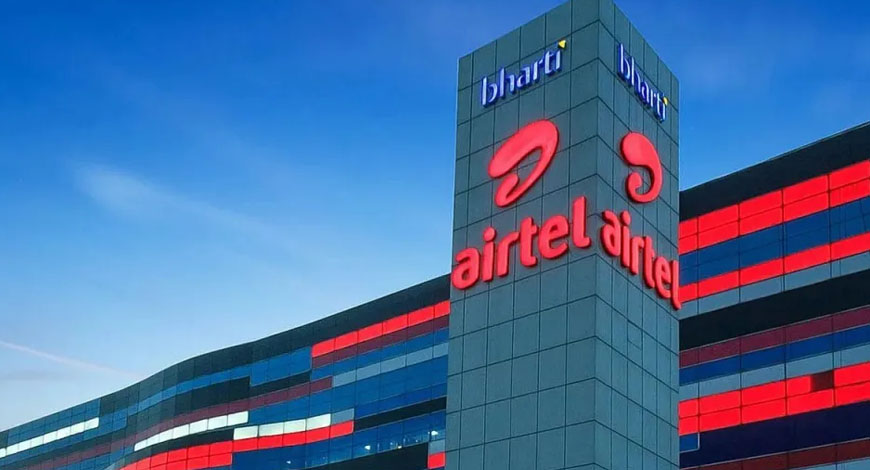5G
Airtel to deploy 5G SA architecture for factory fixed wireless access services

Bharti Airtel will launch fixed wireless access services for factories on the 5G stand-alone architecture (SA), which will be different from the non–stand-alone architecture that it currently uses to offer 5G services to consumers.
FWA is a technology that doesn’t need fibre or copper to provide high-speed internet within consumer or enterprise premises, and was recently launched by Airtel and Jio.
“The launch of our fixed wireless access network will be on SA. In some factories, in plants, we may actually deploy SA. This is in the short term, but in the more medium term, as more and more traffic shifts from 4G networks to 5G networks, we will take our existing spectrum bands, refarm to move to an all SA network. We’re already in the midst of a trial,” Bharti Airtel’s managing director Gopal Vittal said.
He added that trials for SA were being done in a north Indian city with 30 sites. Currently, Reliance Jio is the only other carrier to offer 5G services on SA architecture using the 700 Mhz band. Experts noted that Airtel would not need to use the sub-Ghz spectrum for SA architecture.
SA refers to stand-alone technology which works independent of any underlying layer such as 4G network, while NSA, or non–stand-alone, works in tandem with the 4G layer. Jio uses 5G SA on top of its indigenous end-to-end 5G stack.
Vittal was speaking to analysts on Tuesday, a day after the Sunil Mittal-promoted telecom services provider posted a 55% year-on-year increase in net profit to ₹2,442 crore in the December quarter, on consolidated revenues of ₹37,900 crore.
The average revenue per user, or Arpu, a key metric of profitability, bettered market expectations at ₹208 per month, up 7.7% y-o-y and higher than ₹203 it posted in the quarter ended September 2023, helped by acquisition of high-value customers and improved realizations.
On commercialization of 5G, Vittal said that 5G should not have a different pricing, but noted that free data being offered by existing 4G and 5G plans were the headwinds to 5G monetization. He added that for monetization, ‘tariff repair’ needs to take place, referring to the need for mobile tariffs in India to rise to provide adequate return on capital employed.
“5G has become really about free data today in India, so there is no real monetization on the consumer side. I do not believe, at the same time, that 5G should have differential pricing… monetization is about overall tariff repair, but free data is obviously a headwind on any sort of 5G monetization,” he said.
Vittal noted that Airtel has about 65 million 5G users on its network. The total contribution of 5G users to overall smartphones is expected to rise to 25% by March 2025, from present 15% to 16%. He also said that of the total smartphone shipments, 60% to 80% were 5G-enabled, depending on the price point.
Airtel’s Arpu had increased organically, helped by users migrating from feature phone to smartphone, postpaid data monetization, international roaming, and subscribers shifting to higher-price plans, despite no tariff hikes. He, however, said that Arpus will move up substantially when ‘tariff repair’ takes place.
“The real improvement will come only if there is tariff repair. It’s not a question of if but more of when,” he said.
In response to analysts seeking comments on Jio asking for closure of 2G networks in India, Vittal said that 2G contribution to Airtel’s business was about 17%, and in single digits in markets like Gujarat, Maharashtra, Kerala, Mumbai, and Delhi. “My sense is that in the next few years, you should start seeing substantial, almost disappearing of 2G,” he added.
Airtel does not plan to make additional calls for raising the remainder ₹15,000 crore from its rights issue proceeds, as its free cash flows were healthy. Over the next four to six quarters, the carrier will focus on deleveraging, or lowering the debt, bulk of which was housed in Indian operations and due to the government. This includes spectrum payments and adjusted gross revenue dues.
Vittal said that more sites will be added in five circles—Maharashtra, Gujarat, MP Chhattisgarh, Kerala and Bengal—where it lags the market leader. The executive also noted that two platforms developed internally by Airtel—Airtel Work and omnichannel consumer service – will be replicated in a few countries in Africa where Airtel has its own operations.
“We’re starting with Airtel Africa immediately and will then progressively look to take these to other carriers,” he said. Livemint















You must be logged in to post a comment Login